Genres Auto racing Genre Racing video game | Year of inception 1993 | |
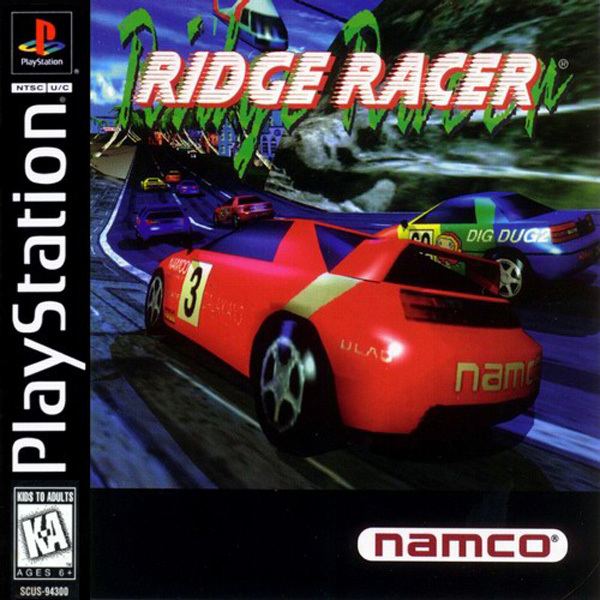 | ||
Publishers NamcoBandai Namco Games Platforms Arcade, PlayStation, PlayStation 2, PlayStation 3, PSP, PlayStation Vita, Nintendo 64, GameCube, Nintendo DS, Nintendo 3DS, Xbox, Xbox 360, mobile, Microsoft Windows Games Ridge Racer Unbounded, Ridge Racer, Ridge Racer 3D, Ridge Racer Accelerated, Ridge Racer 7 | ||
Ridge racer ps1
Ridge Racer (Japanese: リッジレーサー, Hepburn: Rijji Rēsā) is a series of arcade racing video games developed and published by Namco for both the arcade and various video game consoles. In each of the games, players take part in races set in and around the fictional Ridge City while utilizing the concepts of drift racing to quickly traverse corners. Its virtual mascot is Reiko Nagase. The first game was released in 1993 and has overall spanned four arcade titles, eleven console titles, and nine mobile and portable titles. It is highly acclaimed and is considered influential.
Contents
- Ridge racer ps1
- Ridge racer ps1 playthrough nintendocomplete
- Gameplay
- Arcade games
- Console games
- Handheld and mobile games
- Launch releases
- Reception
- References
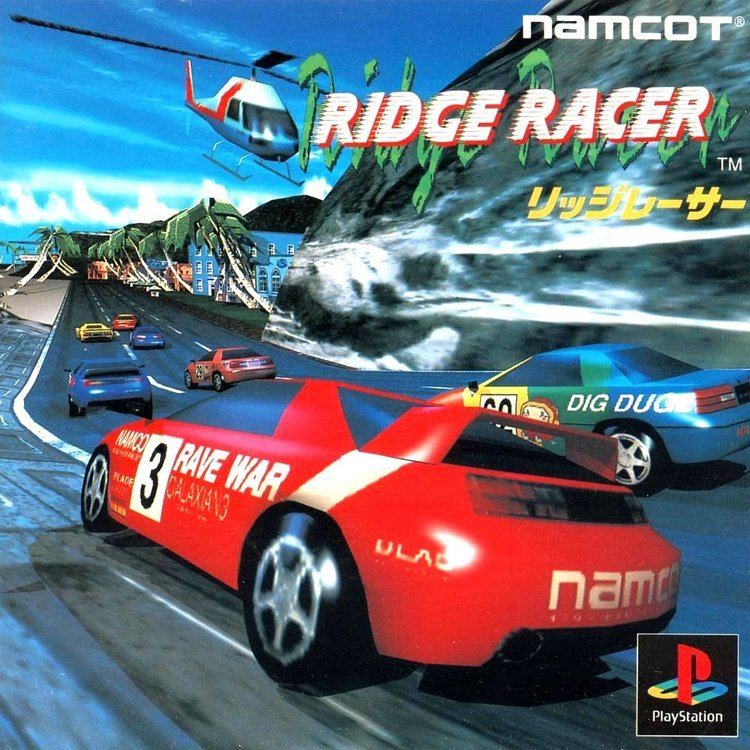
Ridge racer ps1 playthrough nintendocomplete
Gameplay
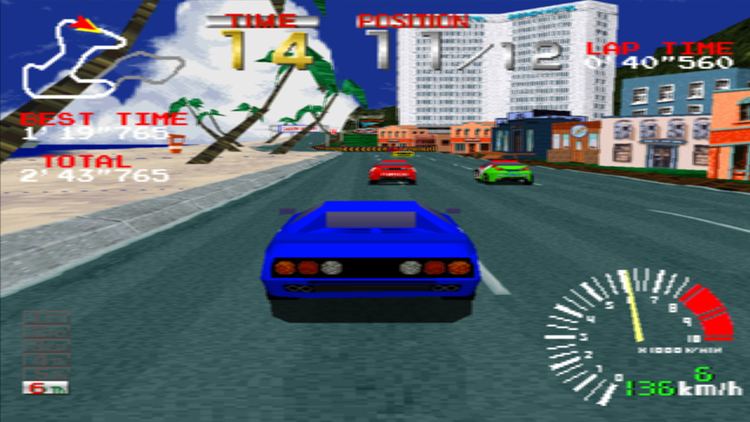
While there are differences among the various games, the basic gameplay in the Ridge Racer series has remained relatively consistent. Races take place on tracks usually laid out on city streets and other public roads (though closed circuit tracks also exist). Starting in last place, players have a limited number of laps in which they can overtake opponents and ultimately win the race. As many of the turns on the course were not intended to be taken at race speeds, players drift through the corners, attempting to maintain as much speed as possible. The latest console game of the series, 2012's Ridge Racer Unbounded, marked a notable departure from the traditional drifting style gameplay, moving to a more destructive style.
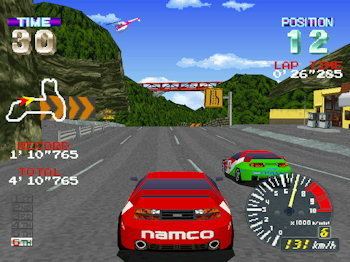
In the arcade games (and the home versions based on those games), the players also race against a timer, with time extended for each successfully-completed lap of the course. The race will end if the timer expires or the player completes the final lap of the race, whichever occurs first. In the console-exclusive versions, players must finish the race in a minimum assigned place in order to advance through the game.
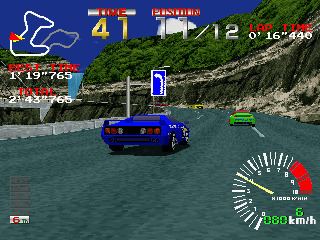
Later games in the series expanded these basics by introducing cars with different drifting characteristics; some cars could be made to drift quite easily, but were more challenging to control, while other cars were harder to initiate drift yet easier to control. Another recent addition was "nitrous", which would give the player's car a short burst of additional speed and could be replenished by drifting through corners at high speeds.
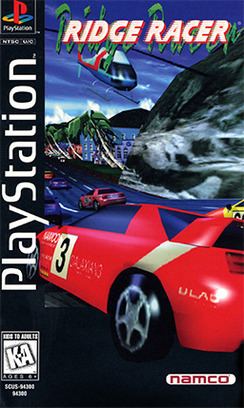
The tracks in the Ridge Racer series are usually located in and around Ridge City, a fictional coastal metropolis. Ridge City's environs are geographically diverse, including beaches, forests, grasslands and mountains. The actual scope of Ridge City has changed over the series, with new regions and new tracks added continually. Most versions of the games incorporate the original courses from the Ridge Racer and Ridge Racer 2 arcade games. Many of the tracks in a given game share components, with sections added or removed to alter the course layout, and some games allow the courses to be run in the opposite direction.
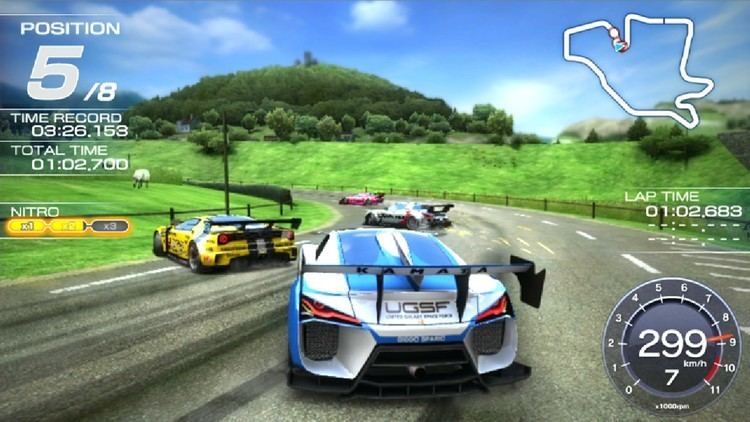
The Ridge Racer games generally use fictional cars with styling inspired by real-life cars of the day. Later games introduced fictional auto companies that offer multiple vehicles; for example, "Kamata" is a Japanese manufacturer specializing in sport compacts, while the Italian "Assoluto" and "Soldat" produces high-performance supercars like Ferrari , the German "Himmel" Produces supercars similar to Porsche Boxster, and American "Danver" marque makes muscle cars, trucks and SUVs. Cars in the series have taken their names and sponsors from various Namco-produced video games.
Arcade games
Console games
Handheld and mobile games
Launch releases
The original Ridge Racer was a launch title for the original PlayStation. Namco went on to make a long launch title trend for various systems, making Ridge Racer V a PlayStation 2 launch title in 2000, and subsequently Ridge Racer DS for the Nintendo DS, Ridge Racer for the PlayStation Portable, Ridge Racer 6 for the Xbox 360, Ridge Racer 7 for the PlayStation 3, Ridge Racer 3D for the Nintendo 3DS, and Ridge Racer for the PlayStation Vita.
Reception
The original Ridge Racer was very well received by critics for its 3D graphics, audio, and the drifting mechanics. It also received an admirable port to the PlayStation, where it became one of the best selling titles in the console's early lifetime. It is also considered as playing a part in giving Sony's system an edge over rival Sega's Saturn during 1994-1995.
Its sequels during the 1990s were also highly successful, in particular Ridge Racer Type 4, often considered the series' best. Its sequel Ridge Racer V received more mediocre reviews, but the subsequent PSP title achieved very high praise. The series' 'idol' mascot Reiko Nagase, who has appeared in most games since 1995's Rave Racer, has often been rated among the most recognisable female characters in video games.
2006's Ridge Racer 7 is considered to have been the series' peak before declining in popularity - the Vita title was negatively received for various reasons, whilst the latest console game, Ridge Racer Unbounded, was marked with a departure from the drifting style and mechanics of what the series is known for, experimenting with a more destructive style similar to the Burnout series. The game was never as popular as its previous main titles and never had a Japanese release either.
